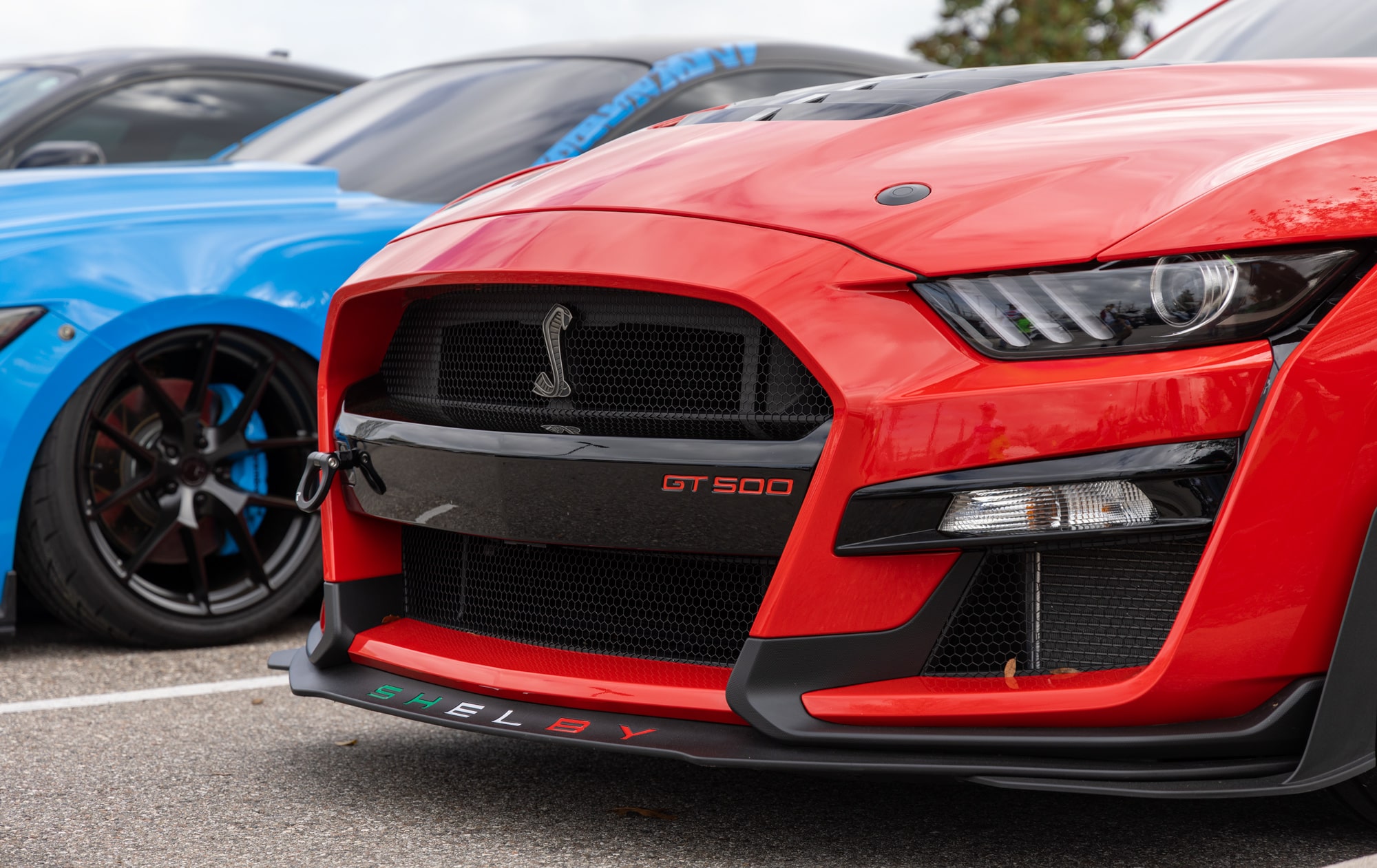PPF vs. Ceramic Coating: Paint Protection Explained
Both 3M PPF and ceramic coating can keep your car looking factory fresh, however there are a couple of major differences between these two products. Learn the pros and cons of both from this guide below.
The global paint protection film industry was estimated to be $432 million in 2020, and is expected to reach $697.1 million by 2028 [source]. After all, cars are a significant investment worth protecting in the eyes of many drivers.
Two of the most popular options are PPF, otherwise known as paint protection film or clear bra, and ceramic coating. They both help prevent scratches, fading, as well as other undesirable effects on a car’s paint job.
Comparing the pros and cons of PPF vs. ceramic coating helps drivers decide which one is right for them. Read on as our experts lay out what these products are and why one might be chosen over the other.
What is PPF (Paint Protection Film)?
PPF is also known as a clear bra because of its history. 3M PPF used to be a thick black film that helped protect military vehicles from the elements. Later, it became the transparent commercial product that we recognize today.
Paint protection films are excellent for preventing paint damage and corrosion. The best part is that they’re self-healing. They can return to their original shape if struck by things like flying rocks or debris.
PPF is also fitting protection against fading, as it blocks the ultraviolet light transmitted by the sun which can damage car paint over time.
What is Ceramic Coating?
Essentially, automotive ceramic coating is a liquid polymer that bonds to surfaces on a vehicle. The industry grew rapidly in the 2000s as many car ceramic coating products began to enter the market.
Ceramic coatings also have a clear layer on top of them which emulates car wax. This helps improve the appearance of the car’s paint job. It allows the car to retain a shiny appearance while preventing yellowing and oxidation.
There are also several types of damage that ceramic coatings can help protect against. These include UV rays, minor scratches, and chemical damage.
Ceramic coatings, including those by 3M, are hydrophobic, so they repel water. This makes cleaning the car easier and reduces car wash frequency since water and dirt tend to not stick as much to coated paint.
PPF vs. Ceramic Coating
Drivers should decide what they want to get out of the process when comparing a ceramic coat vs PPF for their cars. Do they care most about their aesthetics, protection, cost, or longevity? Looking into how these two options affect these factors differently is one of the easiest ways to decide between them.
Also, remember that it doesn’t have to be a choice between getting PPF or ceramic coating. It’s possible to add them both to get all the benefits they provide.
Aesthetic Appeal
Both PPF and ceramic coating improve the appearance of a car’s paint job. They keep it looking its best without changing its color or any customizable aspects that have been added.
At the same time, a ceramic coating would win a theoretical beauty contest against paint protection film. It creates a shinier coat, and some drivers choose it purely for aesthetic reasons.
Maintenance
Another thing that PPF and ceramic coatings share is that they reduce the time spent maintaining the car’s paint job. A few washes are enough for both, but PPF is a bit easier to maintain than the other.
Ceramic coatings reduce the frequency of car washes because of its hydrophobic properties. Drivers won’t have to clean your car as often because any dirt can be washed off easily. Drivers also won’t have to waste time and money applying wax to maintain the shine.
PPF also makes it easier to clean the car – the film creates a barrier between the paint layer and the elements, meaning dirt can be removed with water and a clean towel in most cases. It’s also self-healing, so mild abrasives are tolerated better by the PPF versus a ceramic coating which can get worn down over time.
Level of Protection
All methods of paint protection keep a car’s paint job safe from damage on the road. This is one of their most important benefits, and it may be the factor that helps drivers decide which is the best one for them.
Paint protection film’s self-healing properties make it quicker at repairing itself from damage than ceramic coating. It’s also able to protect against more forms of damage, such as:
- Scratches
- Water swirl marks
- Road hazards and bugs
- Acid rain or chemical contaminants
- Mineral deposits
Ceramic coating can’t protect against all of these issues and can only handle minor scratches. It also isn’t self-healing, so you won’t see it immediately going back to normal after getting damaged. Because of this, ceramic coatings require annual maintenance to retain their original durability.
Drivers who want the highest level of protection available may wish to opt for PPF since it’s more durable. Consider factors such as local environmental conditions and how often the car is exposed to potential damage. Highway drivers benefit especially from PPF due to the risk of flying rocks and debris on long trips. Everything should be taken into consideration, experts advise.
Overall Cost
Drivers should always keep their budget in mind when comparing ceramic coating vs paint protection film. Compare the cost of installation with what will be spent over the lifetime of the car.
PPF can be more expensive to have installed than its counterpart, depending on the level of protection chosen. What drivers are advised to remember is that it’s an investment in the lifetime of their car.
Consider the fact that a quality paint job costs more than either of these two products. Paying a smaller bill for a one-time application of a ceramic coating or PPF is a better option than risking needing to pay a large bill for new paint later on.
It’s also an investment in the car’s resale value. Generally, sellers earn more when they resell their car if its paint job has been protected from damage for years and looks almost as clean as the day it was driven off the lot. Potential car buyers will also know that the vehicle will continue to protected for years to come.
Longevity
Another reason that the extra cost for PPF is worth it is that it lasts longer than ceramic coating. It can stay on the car for years or even its entire lifetime.
A ceramic coating may have to be reapplied at least once or twice depending on the product. This takes more time and money over time despite the lower initial cost. 3M ceramic coatings tend to last a bit longer than others, however individual mileage may vary.
Where to Get the Best Paint Protection for Your Car
Paint protection keeps cars looking new and maintains their resale value. It’s such a popular service that there are countless options on the market available today.
Compare two of the most popular paint protection products, PPF vs ceramic coating, to decide between them. PPF provides objectively superior protection and lasts longer, but doesn’t look as appealing. A ceramic coating looks better, cost less, but doesn’t last as long and requires annual maintenance to retain its original thickness.
Getting one of these options installed is an important way to protect a car for its entire lifetime. Last bit of expert advise: choose a reputable installer that has been around for years and is established in the community. This is important, in case there’s a warranty claim, that shop will still be in business and able to honor their guarantee.


